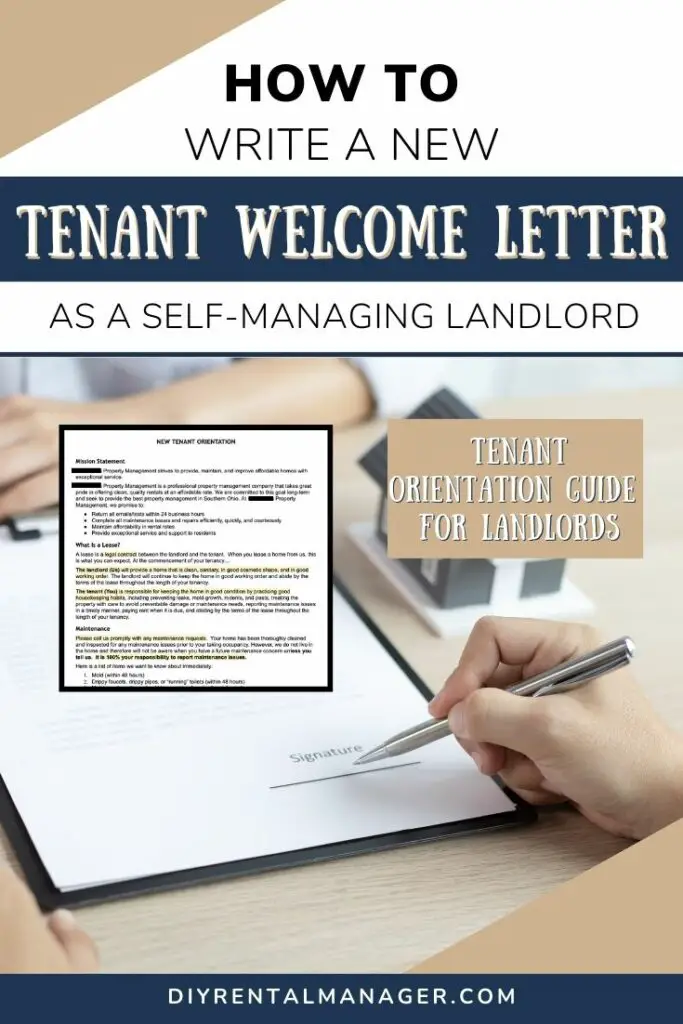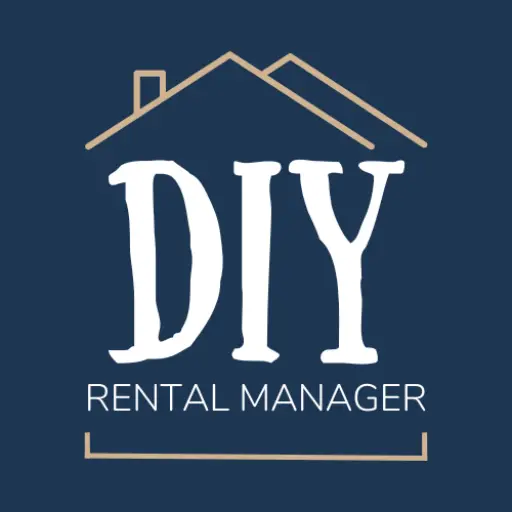When we have found a new tenant that we are ready to sign a lease with, we want to start the new relationship off on the best terms possible.
In order to do that, we need to ensure that they are familiar with the most important details of the lease. We do this by providing a New Tenant Welcome Letter. So, what is included in a New Tenant Welcome letter?
New Tenant Welcome Letters typically include how rent payments, maintenance requests, renter’s insurance, and many of the lease policies work. Some of these lease policies include pest control, lawn care/snow removal, noise levels, guests, parties, smoking, and pets.
With those main points in mind, I’ll cover everything you need to write a New Tenant Welcome Letter that will get your new tenants up to speed quickly below.
Let’s dive in!
Quick Navigation
- What Is A New Tenant Welcome Letter?
- Benefits Of Providing A New Tenant Welcome Letter
- What To Include In A New Tenant Welcome Letter
- When To Provide A New Tenant Welcome Letter
- Final Thoughts
- Related Content
1. What Is A New Tenant Welcome Letter?
A New Tenant Welcome Letter (also known as a New Tenant Orientation Letter) is a packet provided by the landlord to the tenant at the lease signing that explains the most important details of the lease and any rules or regulations you expect the tenant to follow during their tenancy.
We’ve structured our letter as more of a New Tenant Orientation, which we review at the lease signing instead of reading each line of the lease. The New Tenant Orientation is only 5 pages long (while our lease is close to 15 pages), so it only takes about 5 to 10 minutes to review with the new tenant.
New Tenant Welcome Letters also are written in layman’s terms (instead of the legal jargon that is often found in leases), so we can explain all of our policies in abbreviated, easy-to-understand terms.
2. Benefits Of Providing A New Tenant Welcome Letter
There are several benefits to creating a New Tenant Welcome Letter. These benefits include:
- Shortens the lease signing process
- Easier to understand than the lease
- Provides the tenants with clear expectations
- Gives the tenant a chance to ask any clarifying questions
- Makes you as a self-managing landlord look more professional
- Saves you a ton of time answering repeat questions down the road
There really aren’t any drawbacks to creating this orientation letter other than the time it takes to create it once. It will simplify your lease signing process and set up clear boundaries right from the beginning of the tenancy.
3. What To Include In A New Tenant Welcome Letter
Now that we understand what a New Tenant Welcome/Orientation Letter is and why we want to have one, let’s discuss what should be included in your letter.
A. Mission Statement
The first section of the letter should include your property management company’s mission statement along with a list of ways the tenant can get in contact with you/your property management company.
As a self-managing landlord, we like to act as a separate property management company (rather than “just the landlord”). This separation in identity makes us look more professional in the tenant’s eyes and lets us operate more like a third party than the owner.
So, the first thing we include in our New Tenant Orientation is an introduction to who we are and what our goals are. This introduction includes:
- Our company name (we made one up)
- Our mission statement: We are a professional property management company that takes great pride in offering clean, quality rentals at an affordable rate.
- Our promise:
- Return all emails/texts within 24 business hours
- Complete all maintenance issues and repairs efficiently, quickly, and courteously
- Maintain affordability in rental rates
- Provide exceptional service and support to residents
- Our contact information:
- Text
- Office hours (Monday to Friday from 10 AM to 4 PM)
Tenant Welcome Letter Mission Statement Examples
Example 1: At Horizon Property Management, we’re more than just a name – we’re a commitment to excellence. Our mission is simple yet resolute: to provide clean, quality rentals at an affordable rate. We promise to be responsive, ensuring that all emails and texts are answered within 24 business hours. When it comes to maintenance issues and repairs, our dedicated team works efficiently, swiftly, and always with a courteous touch. We understand the importance of affordability, and we’re dedicated to maintaining competitive rental rates. Our residents are at the heart of our business, and we pledge to provide them with exceptional service and support. Reach out to us via email or text, and our office is open Monday to Friday from 10 AM to 4 PM to assist you with all your property management needs. Your comfort and satisfaction are our top priorities at Horizon Property Management.
Example 2: At Horizon Property Management, we’re dedicated to your satisfaction. We promise to respond promptly to emails and texts within 24 business hours and efficiently address maintenance issues. Our competitive rental rates reflect our commitment to affordability. For any inquiries, please contact us via email or text, or visit our office during our weekday hours from 10 AM to 4 PM. Your comfort and well-being are our priorities.
Example 3: At Horizon Property Management, we’re more than just a name – we’re a commitment to excellence. Our mission is simple yet resolute: to provide clean, quality rentals at an affordable rate.
We promise to:
- Return all emails/texts within 24 business hours
- Complete all maintenance issues and repairs quickly and efficiently
- Maintain affordability in rental rates
- Provide exceptional service and support to residents
For any questions or maintenance requests, please contact us via email or text Monday to Friday from 10 AM to 4 PM.
B. Lease Definition
The next section of the letter should include a brief description of what a lease agreement is. In case anyone is not fully aware of what a lease is or if they need to be reminded, we like to include this section.
It’s a very high-level reminder of our responsibility as a landlord to provide clean housing that is in good working order while it is the tenant’s responsibility to keep the home in good condition, report maintenance issues in a timely manner, and pay rent on time.
Items to include:
- Definition of a lease: It’s a legal contract between the landlord and the tenant
- The landlord’s responsibilities: provide clean housing in working order and continue to keep the home in good working order
- The tenant’s responsibilities: keep the home in good condition by practicing good housekeeping habits, reporting maintenance issues, and paying rent on time
Tenant Welcome Letter Lease Definition Examples
Example 1: A lease serves as a legally binding agreement between you, the tenant, and us, the landlord. Here’s what you can expect when you lease a home from us: At the start of your tenancy, we will provide you with a clean, sanitary, and well-maintained home. We are committed to keeping the property in good working order and abiding by the lease terms throughout your stay.
In return, as the tenant, your responsibility is to maintain the home’s good condition through proper housekeeping practices. This includes preventing issues such as leaks, mold, rodents, and pests. Treat the property with care to avoid avoidable damage or maintenance needs. Timely reporting of maintenance concerns is important, as is paying rent on time and adhering to the terms of the lease throughout your tenancy.
Example 2: When you lease a home from us, you enter into a legally binding agreement between you, the tenant, and us, the landlord. We are committed to providing you with a clean, sanitary, and well-maintained home at the commencement of your tenancy, and we will continue to ensure the property remains in good working order while adhering to the terms of the lease throughout your stay.
In return, we expect you, as the tenant, to uphold your end of the agreement by maintaining the property in good condition, reporting issues promptly, paying rent on time, and abiding by the terms of the lease throughout your tenancy.
C. Maintenance
The next section of the letter should thoroughly explain how to handle maintenance issues. Some of the points you should cover include:
- The types of maintenance issues you want to know about immediately (water issues, flooding, leaking, mold, etc.)
- The tenant’s repair responsibility
- Mold from living conditions
- Leaks caused by misuse or neglect
- Broken faucets/knobs
- Broken windows, blinds, doors, glass, locks, or any other damage caused directly by the tenant or their guests
- Light bulbs
- Batteries (especially in smoke detectors and carbon monoxide detectors)
- Furnace filters
- Clogged toilets, bathtubs, sinks, and other drains
- How to submit a maintenance request
- What is emergency maintenance
All of these maintenance items will be points of contention with your tenant at some point or another, so it is best to explain upfront what will happen if they occur.
Oftentimes, just explaining the types of repairs that will be billed back to them upfront reduces the amount of repairs you hear about/need to handle because the tenant knows the rules so they will go and take care of the problem themselves.
Tenant Welcome Letter Maintenance Examples
Example:
Maintenance Reporting:
Promptly report any maintenance issues to us. Although we’ve conducted a thorough inspection before your move-in, we rely on your communication to address future concerns since we don’t reside in the home. It’s crucial to report any issues promptly, and it’s entirely your responsibility to do so. Here’s a list of items we need to know about right away:
- Mold: Report within 48 hours.
- Leaky Fixtures: Notify us within 48 hours.
- Excess Moisture: Any unusual moisture in places like the roof or under sinks.
Your Repair Responsibilities:
Taking care of your living environment is essential to prevent damage.
- Mold (from living conditions): Maintain cleanliness and ventilation to prevent mold. Clean up any mold or mildew promptly.
- Certain Leaks: You’re responsible for leaks caused by misuse or neglect, so report them immediately.
- Faucets/Knobs: Handle them carefully to avoid breakage.
- Damage: Any damage caused directly or indirectly by you or your guests.
- Light Bulbs: Replace these when needed.
- Batteries: Ensure your smoke and carbon monoxide detectors have working batteries.
- Furnace Filters (if applicable): Replace these as necessary.
- Clogs: Address clogs in toilets, bathtubs, sinks, and drains.
- Unreported Repairs: Notify us of any repair needs promptly to prevent avoidable damage, especially concerning mold and damage from leaks.
Submitting Maintenance Requests:
You can easily submit maintenance requests through apartments.com. For additional guidance, refer to apartments.com’s online tutorials.
Emergency Maintenance:
Emergencies are situations that, if not addressed immediately, can result in significant damage, often related to water or fire. If it’s a fire-related emergency, please call 911.
D. Rent
The next section of the letter should thoroughly explain how rent payment and late fees will work. Some of the points you should cover include:
- The rent due date (1st of the month)
- The rent payment grace period (we offer 5 days)
- Where to pay rent
- The late charges will occur if rent is not paid in full by the end of the grace period
- What is going to happen if they are late with rent (gets expensive quickly, a Notice to Pay or Vacate will be posted on the door, an eviction will be filed, an eviction will make it hard for them to rent another home, any unpaid rent will still be owed)
By spelling out exactly how rent payments and late fees work, we train the tenants early on that paying rent on time is a big deal and we don’t tolerate excuses.
Now, that doesn’t mean we aren’t flexible with them with the late fees because it is not our goal to charge so many fees that they can’t recover. But we don’t tell them that upfront. When tenants see how the late fees work from day one, they make sure their rent payment is a priority, so that they never have to pay any late fees.
It makes a big difference in their mindset when you explain it upfront!
Tenant Welcome Letter Rent Payment Examples
Example:
Rent Due Date:
Rent is always due on the 1st of each month, and it must be paid in full to avoid late fees. Any outstanding balances, including past rent due, late fees, and maintenance bills, are also considered rent due and should be paid on the 1st. Rent is paid through apartments.com unless stated otherwise in the lease.
Timely Payment Matters:
Paying rent on time is essential, and it’s solely your responsibility to ensure timely payment. While the due date is the 1st, we offer a 5-day grace period each month to accommodate unforeseen circumstances.
Late Payment Consequences:
If rent is not paid by the 5th:
- On the 6th, a $50 late fee is added.
- Starting on the 7th, an additional $10 accrues daily until rent is paid.
- On the 12th, you’ll receive an Eviction Notice, giving you 3 days to pay rent and late fees in full or face eviction.
- By the 14th, if rent and late fees remain unpaid, eviction proceedings will commence.
Late Rent Implications:
Late payments can be costly, affecting your financial well-being:
- Immediate eviction filing.
- Eviction records can make it extremely difficult to find another home to rent.
- You will be billed for attorney’s fees upon eviction.
- A significant monetary judgment for the rent owed will be billed, which if left unpaid can potentially be sent to a collection agency, and will impact your credit and credibility.
E. Renter’s Insurance
The next section of the letter should explain what renter’s insurance is and why they are required in their lease to carry it.
We’ve left this section off the letter in the past and realized that many renters have no clue how rent insurance works or why it is so valuable to them. So we decided to implement a small section in this letter to educate them on the importance of carrying liability coverage of $100,000.
To begin, we explain that the property does have home insurance, but it will only cover damages to the building itself, not any damage to their possessions or liability from injury while visiting them.
Next, we give them two recommendations for where they can get renter’s insurance: Lemonade and State Farm.
Then finally, we explain that if they have a dog that’s been approved on the lease, the dog must be covered on their renter’s insurance or the dog will not be allowed on the property. This part was added on because this is the best way for us to protect ourselves against any liability from “vicious breeds”.
Personally, I don’t care what type of dog you want to own. All I care about is that the dog is adequately covered with liability insurance if it were to bite someone so that it does not make us a target to a money-hungry lawyer. State Farm typically has a pretty good pet liability coverage policy for renters.
Tenant Welcome Letter Renter’s Insurance Examples
Example:
Renter’s Insurance Requirement: Your lease mandates maintaining a minimum of $100,000 in renter’s insurance coverage.
Why It Matters: Renter’s insurance protects your personal belongings from unexpected events such as theft, a fire, flooding, or sewer backup damage and provides liability coverage for injuries on your property.
Building Insurance vs. Renter’s Insurance: The building is covered with its own insurance. Though, building insurance only covers structural damage, not your belongings or personal liability.
Affordable Protection: For a small monthly fee ($5-$30), you can protect your household and belongings. Consider insurance providers like Lemonade and State Farm for reliable coverage.
Pet Owners Note: If you have approved dogs on the lease, ensure they are covered by your renter’s insurance. State Farm is known for covering most dog breeds.
F. Lease Policies
Finally, the last several sections we go over are all of the lease policies that are important for the tenant to know. These policies include:
- No smoking in any rental or within 20 feet of the building
- No pets (unless otherwise stated in the lease)
- Decks/balconies/porches must remain clear of debris, garbage, bicycles, toys, furniture, tarps, and other clutter
- No trampolines, pools, or kiddie pools allowed on the property
- Lawn care/snow removal is the tenant’s responsibility to maintain unless otherwise stated in the lease
- Pest control is 100% the tenant’s responsibility after the first 30 days
- Guests are limited to 1-3 per day
- Noise levels should be kept to a minimum
- Loud parties are not allowed
- Occupancy is limited to only the people listed on the lease agreement
We like to list all of these policies in the Tenant Welcome Letter so they can quickly skim through our most important rules and regulations without having to read through pages of information in the lease agreement.
It’s also a great way to get the new tenant up to speed on what we expect from them while we are at the lease signing.
Tenant Welcome Letter Lease Policy Examples
Example:
Policies: Your lease contains important policies, so please be sure to become familiar with them to avoid a notice violation fee or worse, termination of your tenancy. Here are key policies to remember:
- No Smoking: Smoking is prohibited inside rentals and within 20 feet of buildings due to potential damage.
- No Pets: Pets require written approval and may incur additional fees. Hiding pets risks eviction.
- Decks/Balconies/Porches: Keep them clear and use them for enjoyment only; no storage or drying of clothes. Failure to comply can result in eviction.
- No Trampolines/Pools/Kiddie Pools: These items are not allowed on the property and may incur fees if found.
- Lawn Care/Snow Removal: Maintain your property section, including landscaping, trimming, mowing, and snow removal.
- Pest Control: Manage pests after the initial 30 days. Consider using Ortho Home Defense for prevention.
- Guests: Limit guests to 1-3 per day.
- Noise Levels: Keep noise to a minimum to respect neighbors’ quiet enjoyment.
- Parties: Loud parties are not permitted.
- Occupancy: Only lease-listed occupants are allowed. Notify us for roommates or long-term guests, who must meet approval standards. Note that occupancy is limited to 2 people per bedroom for your home.
- Notice to Vacate: When you decide to move, consult your rental agreement or lease for guidance. For month-to-month rentals, provide 30 days written notice before month-end. With a lease, give 30 days’ written notice before its expiration. Terminating the lease early incurs an early termination fee equal to 2 months’ rent.
That’s it! You’ve got all the pieces necessary (plus examples) to write a great Tenant Orientation Letter!
4. When To Provide A New Tenant Welcome Letter
The best time to provide a New Tenant Welcome letter is at the lease signing.
We like to review the New Tenant Welcome Letter at the lease signing so that there is no excuse for the tenant to not understand what is inside it. We also send a copy of the letter home with the tenant so they can always have it on file, and we also send a copy of it to them via email after the lease signing appointment.
If we inherit any tenants during the purchase of the property, we will email this New Tenant Welcome Letter as a way of introducing ourselves as the new property management company that will be taking care of them.
So far, we’ve used this New Tenant Orientation Letter on 6 inherited tenants and 12 of our existing tenants as we transitioned them to our new payment portal (Apartments.com).
We’ve had a pretty good experience transitioning everyone over because we provided this letter that contains such clear expectations, so everyone knew what to expect from us and what we expect from them.
Final Thoughts
That’s it! By now, you have a great idea of how to write a New Tenant Welcome letter. Now, all that’s left to do is prepare and run the lease signing!
Also, check out the best way to collect rent and charge late fees, so you’ll always get rent paid on time (or collect extra money if you don’t).
We’ve found that by providing this orientation letter, we get better communication overall and the property returned to us in better condition than previous times when we didn’t provide this letter upfront. This ultimately helps us provide a better service to our tenants and foster a better relationship with them.
I hope you find this article useful and that it helps you manage your new tenant with ease!
Catch you in my next post!
Related Content
Check out my recommended tools, templates, and resources to free up your time from constantly working on and worrying about your rental properties. My husband and I use these tools to self-manage 18 rental units (and counting) for only 5-10 hours a month.
Keep in mind that most of these items are either free or reasonably priced for the amount of value that they provide. My goal on this page is to recommend tools, templates, and resources that we use daily and wish we had known about at the beginning of our landlord journey. Since implementing them, they’ve saved us countless hours and tons of headaches.
Finding good tenants for a rental property is arguably one of the most essential tasks that a self-managing landlord must accomplish. You’re searching for a high-quality tenant that will pay on time, take care of the property, and be easy to communicate with all while trying to get the most amount of rent and filling the vacant unit as quickly as possible.
That’s no small feat! So, how can you find good tenants for your rental property?


By Christine
Christine is a blogger and real estate investor/property manager who self-manages 18 rental units (and counting) alongside her husband, Adam. Although she successfully automates the management of her rentals and pockets the property management fee now, her path to success was not easy.
Go here to read her story, “From An Overwhelmed First-Time Landlord To A Pro Investor Self-Managing 18 Rentals On Less Than 10 Hours Per Month“.
Recent Posts
How To Reject A Tenant Application (With Examples!)
When you start to accept applications for your rental property, you’ll inevitably get some applications that do not meet your minimum screening standards (even if you list them in the listing, some people just don’t read or don’t care). When this happens, you’ll have to carefully review the application and send back a Tenant Application…
How To Write A New Tenant Welcome Letter For Your Rental Property
When we have found a new tenant that we are ready to sign a lease with, we want to start the new relationship off on the best terms possible. In order to do that, we need to ensure that they are familiar with the most important details of the lease. We do this by providing…
Ultimate Guide To Collecting Rent And Charging Late Fees As A Landlord (Easy System!)
Collecting rent from tenants is one of the most time-consuming (and emotionally charged) parts of being a landlord. Not only will you get every excuse under the sun about why rent will be late this month (again), but you will also miss out on opportunities to collect extra income and increase rent over time if…



